Veiðivötn, Fishing Lakes, are a cluster lakes in the Southern Interior. The lakes are renowned for trout fishing. The area is worth visiting for its magnificent scenery and birdlife. Click to see the slideshow.
Veiðivötn, Fishing Lakes, are a cluster lakes in the Southern Interior. The lakes are renowned for trout fishing. The area is worth visiting for its magnificent scenery and birdlife. Click to see the slideshow.
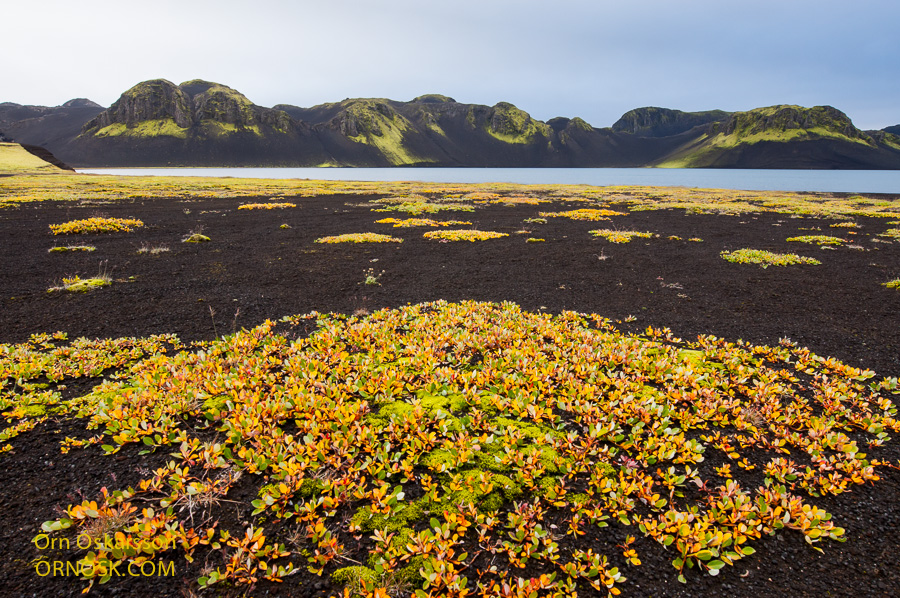
Autumn is beginning to show. Highland vegetation has started to wilt, bringing us colours in a multitude of shades and hues. The orange colours of the willow and the light green colour of the moss go well with the black sand. These colours will not stay for long. Soon it will start snowing and the white snow will cover the vegetation until next spring when everything comes alive again.
From Veiðivötn in the Southern Interior
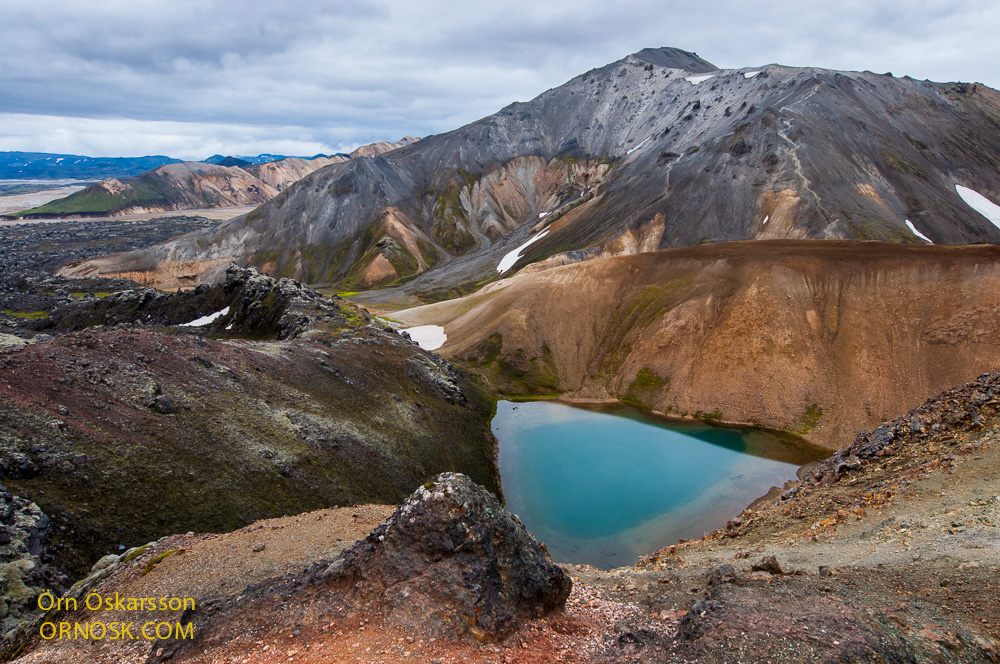
The scenery in the Icelandic highlands is magnificent in all its diversity and colours. Barren black desert sands and multicoloured mountains are a fascinating attraction. Fjallabak Nature Reserve is one of the places that many visit and not without reason. It is famous for its natural geothermal hot springs and colourful rhyolite mountains.
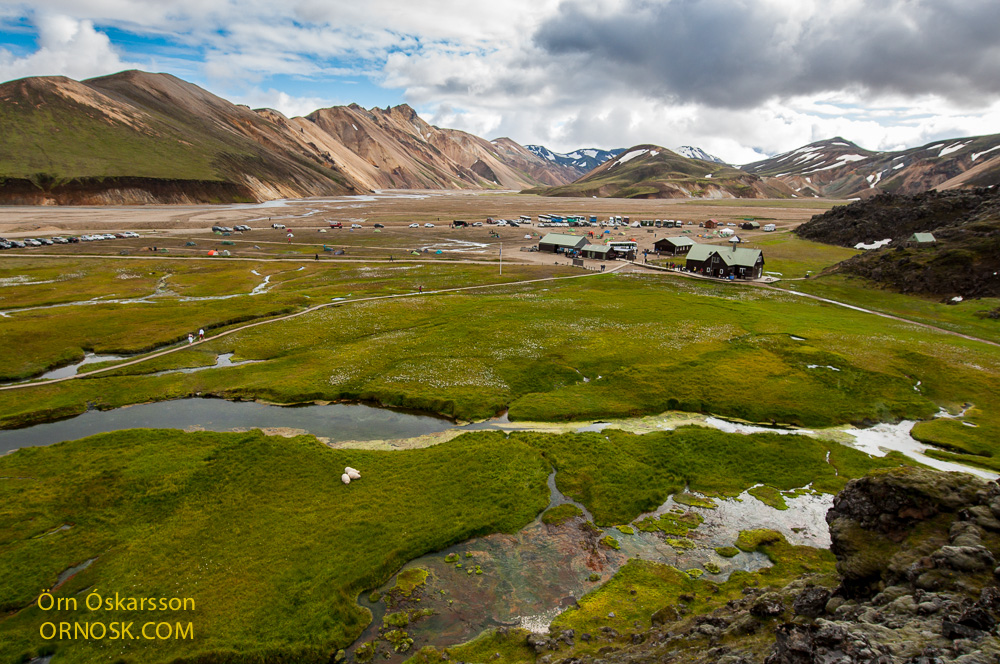
Landamannalaugar is a very popular destination, at the beginning of the hiking trail Laugavegur. Lots of people come there and enjoy a bath in the hot springs.
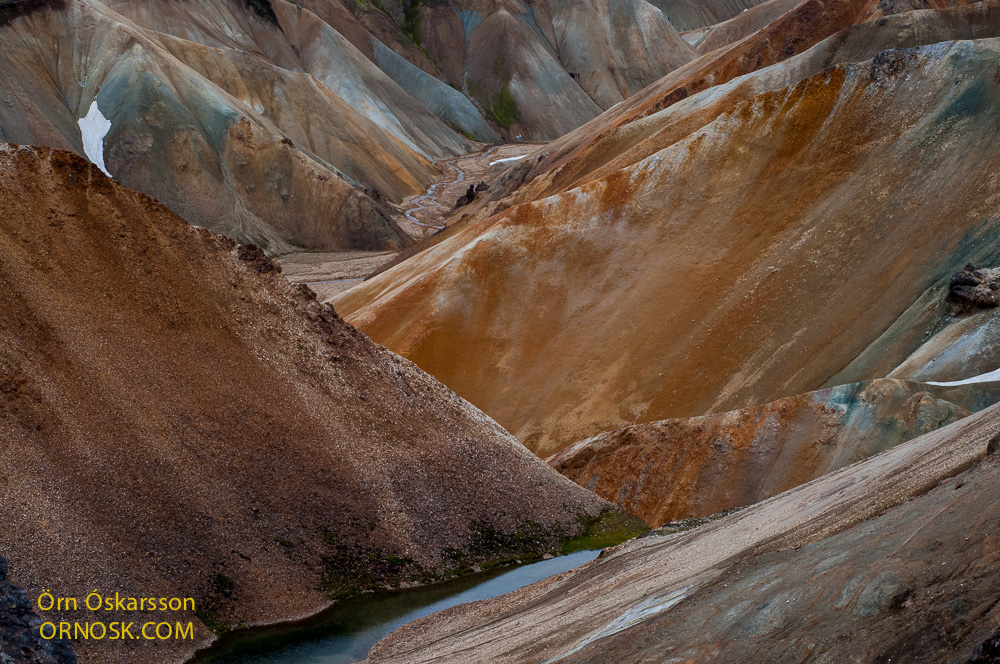
The route to the area is rather rough and not recommended for small cars.
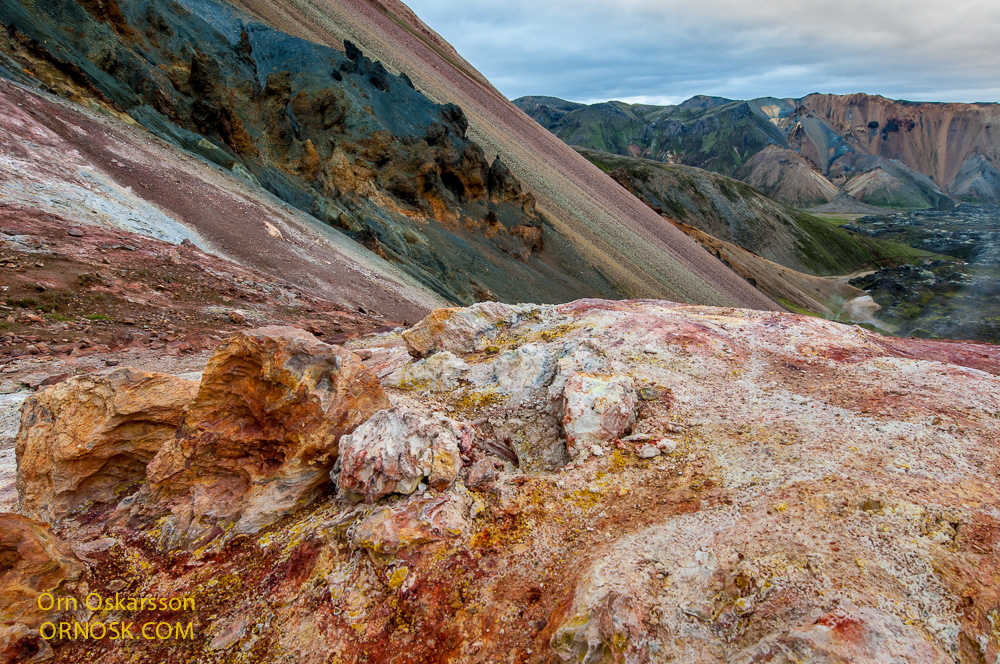
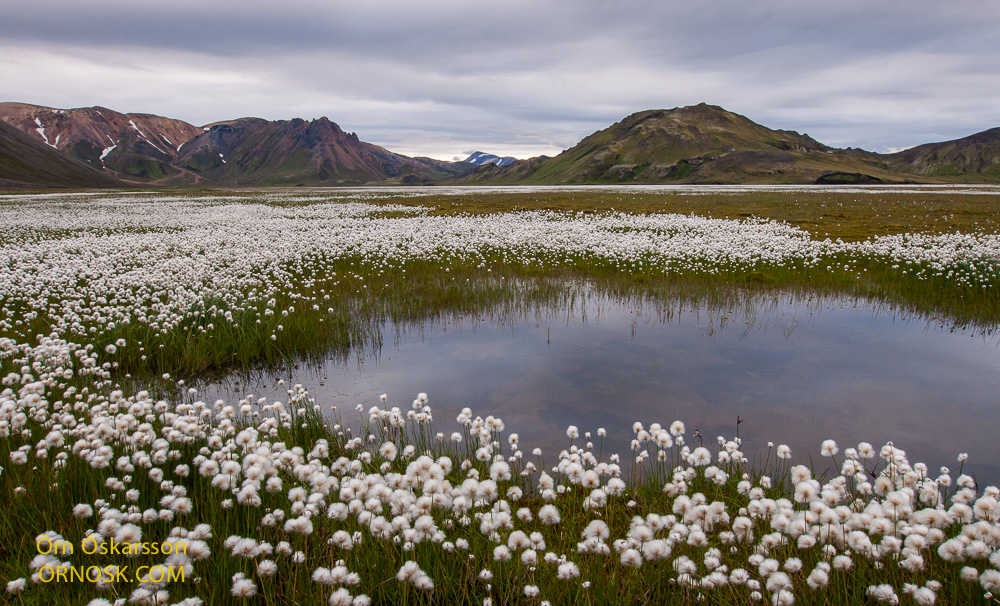
From far off you can easily mistake white cottongrass (Eriophorum scheuchzeri) for snow. Its beautiful white fields are very prominent in the scenery. Here in Kýlingar, near Landamannalaugar in the Southern Interior, white cottongrass grows in the fertile soil from a former glacial river. 40 years ago there used to be a lake here that has been filling up with mud and clay from the river. Now we have this beautiful wetland with shallow crystal clear creeks and cotton grass growing luxuriantly.
The bird life in the spring is probably an interesting sight but it is not an easy place to visit because the roads usually do not open until late June or beginning of July.
The Landmannalaugar area attracts a lot of tourists in the summer time. For photographers it is exceptional in its diversity and colours. Here is Atli photographing, visit his Flickr page: https://www.flickr.com/photos/atlapix/
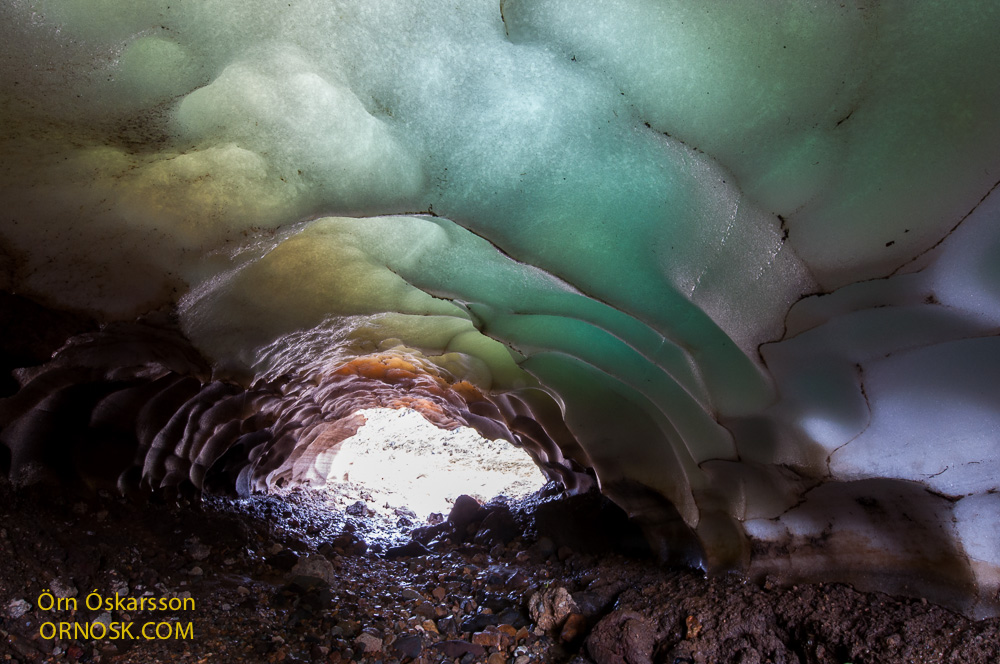
There is still a lot of snow in the interior from last winter. Much of it will not melt this summer and might, with time, turn into glacier ice. In canyons and gores, creeks have melted tunnels through the ice, creating ice caves. Here is a photo of one of these interesting natural phenomena in the Landmannalaugar area in the southern highlands of Iceland.
In the last few nights Northern Lights have adorned the night sky over Iceland. From around August 20 the nights become dim enough for the Northern Lights to become visible, but in summer it is too bright. Last night, around midnight, the Northern Lights could be seen, here in the sky above the church at Úlfljótsvatn (South Iceland, near Þingvallavatn). They were bright enough to be seen despite the bright moonlight.
Icelandic sands are usually black lending the scenery a dark desolate appearance. Black sands are not so common in other places.
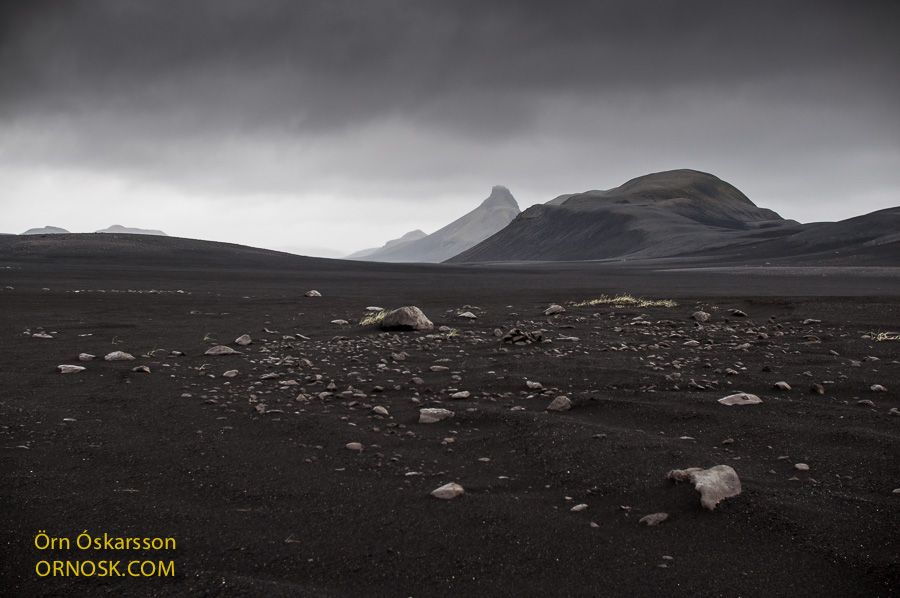
The Icelandic sands are composed of volcanic minerals and lava. These sands can be found on the coasts of volcanic islands such as Hawai, the Canary Islands, the Aleutians, to name a few.
Black sands are nice backgrounds for photographing people. Here is Aldís who loves the barren interior of Iceland. It’s raining and the wind is blowing but that only makes the experience more worthwhile.
The sand is black because many volcanic minerals and rocks are dark-coloured. Common rock types of volcanic islands are basalt, andesite and volcanic glass. Minerals such as pyroxene, amphibole and iron oxide also lend the sand its black colour.
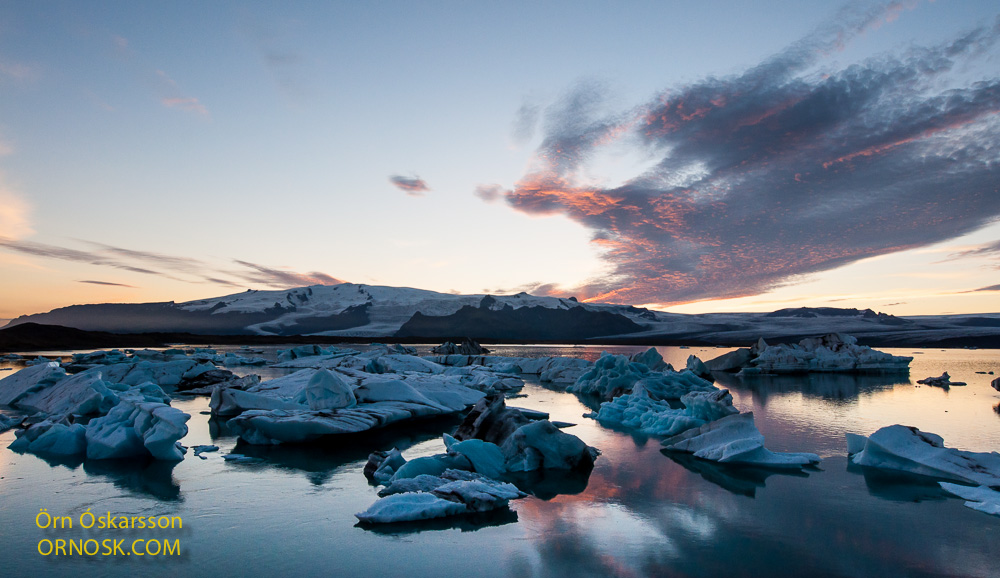
Jökulsárlón, Glacier Lagoon, is in the southeast of Iceland. It is one of the most famous tourist attractions here. Around 200 to 300 thousand people come there every year and several thousand come to see the annual fireworks show.
Yesterday was the 16th time this event took place. The fireworks are lit up from the icebergs in the lagoon and light up the the ice and the water, – a beautiful spectacle. It’s well worth the trip there when the weather is favourable.
These photoes are from the event in August 2012.
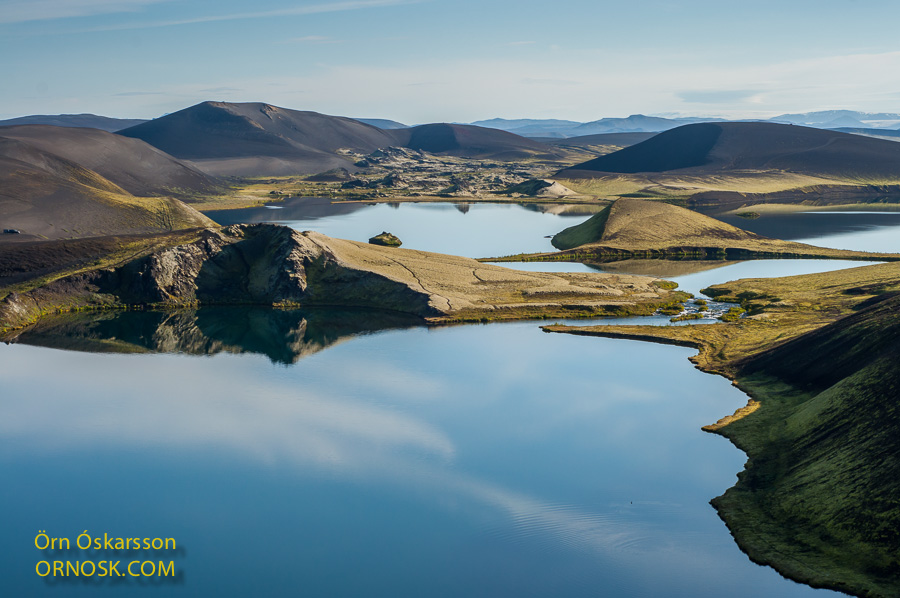
Veiðivötn, Fishing Lakes in translation, is a cluster of lakes in the southern interior. In total there are 50 lakes and ponds in the area.
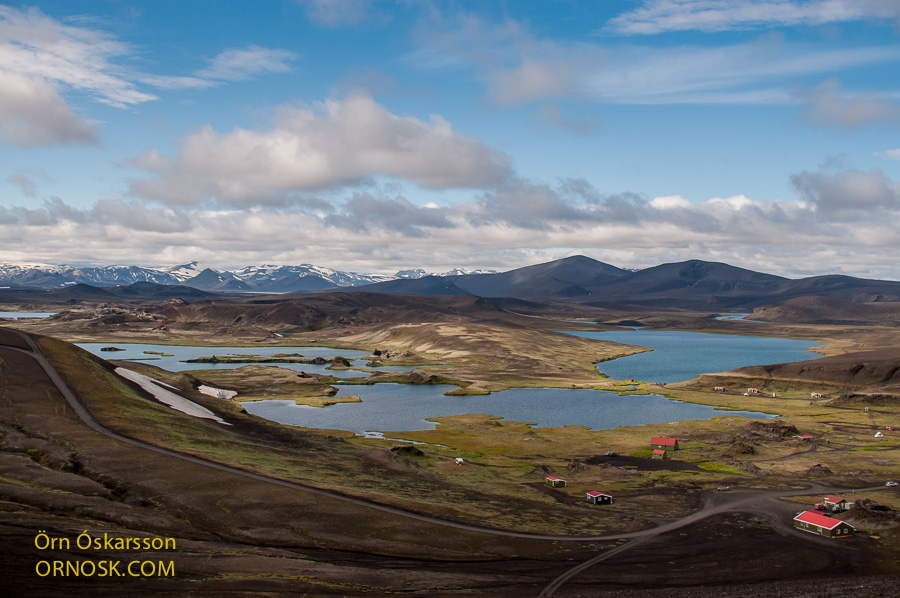
Three species of fish are found in the area: trout (Salmo trutta), char (Salvelinus alpinus) and stickleback (Gasterosteus aculeatus).
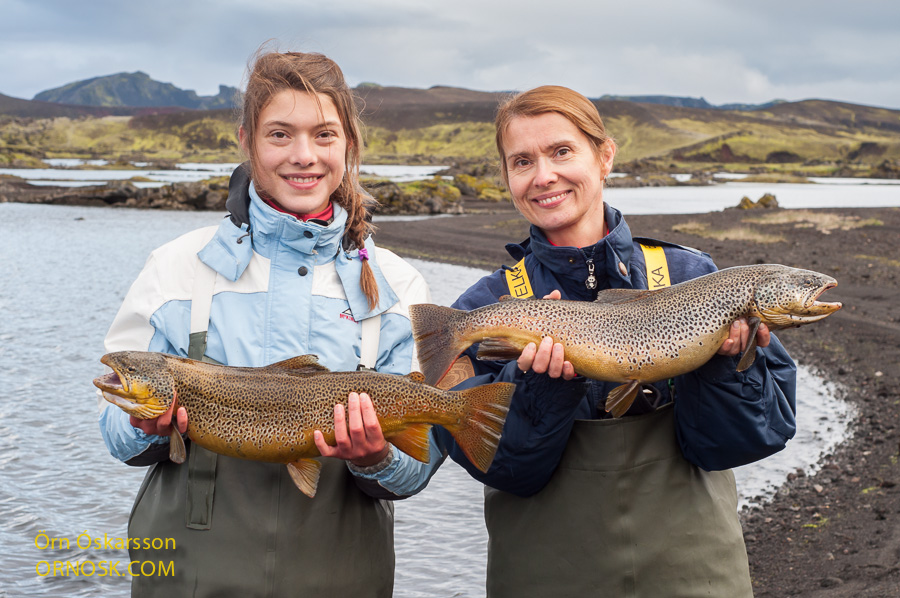
From ancient times trout could be found in the lakes and today it is still in most of them. This trout is unique. Trout of this size and this fat can only be found in a few places today.
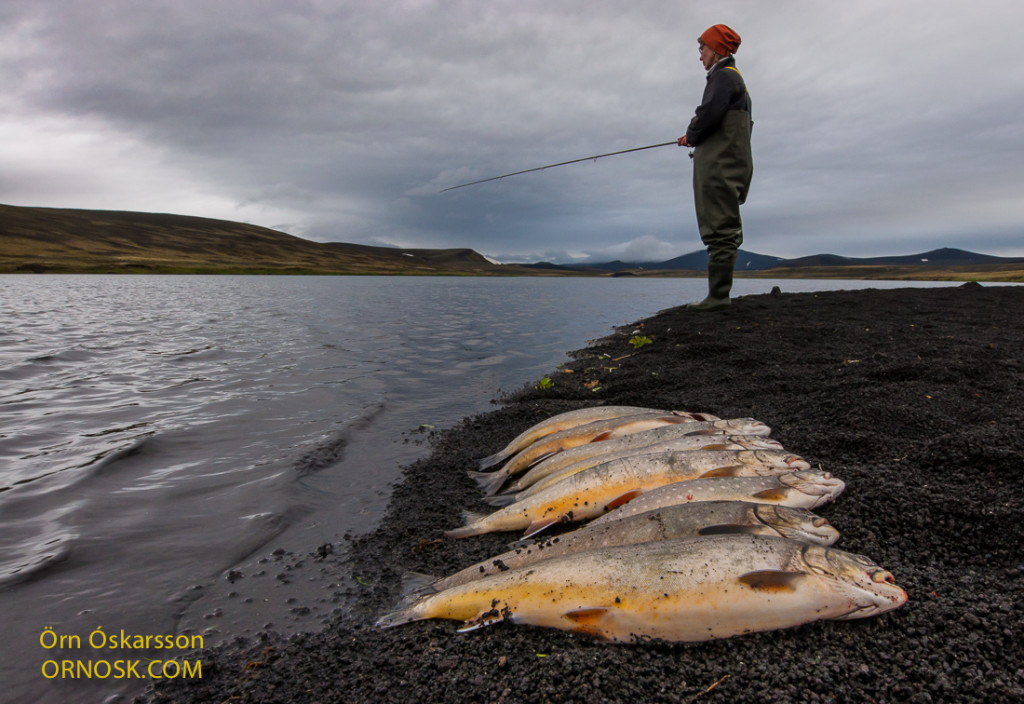
According to genetic research the trout in Veiðivötn lived in isolation after the end of the Ice Age. It is rare to find Ice Age trout as little evolved at this one. The trout in Þingvallavatn Lake is of the same species. This trout is very fast-growing and puberty starts later than in trout species that live in lakes in lowlands and in seagoing trout.
Char was first noticed in Snjóölduvatn Lake in 1972 and today char can be found in 11 lakes in the area. Sticklebacks can probably be found in all the lakes in the area.
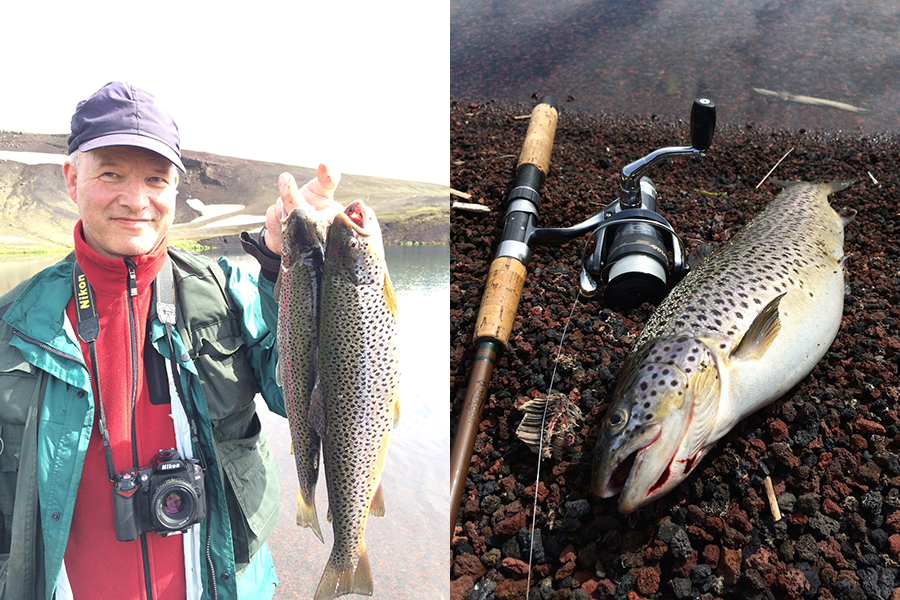
Trout fishing has most likely been practiced from the beginning of settlement in Iceland. In 1965 fishing permits were first sold in the lakes, for two months every summer, from the end of June to the latter part of August. Today fishing permits are sold for the period of June 18 to August 19. In 1965-1980 the number was limited to 20 rods but today the number has been limited to 80 rods. In the last 10 years 20 – 35 thousand fish have been caught every summer.